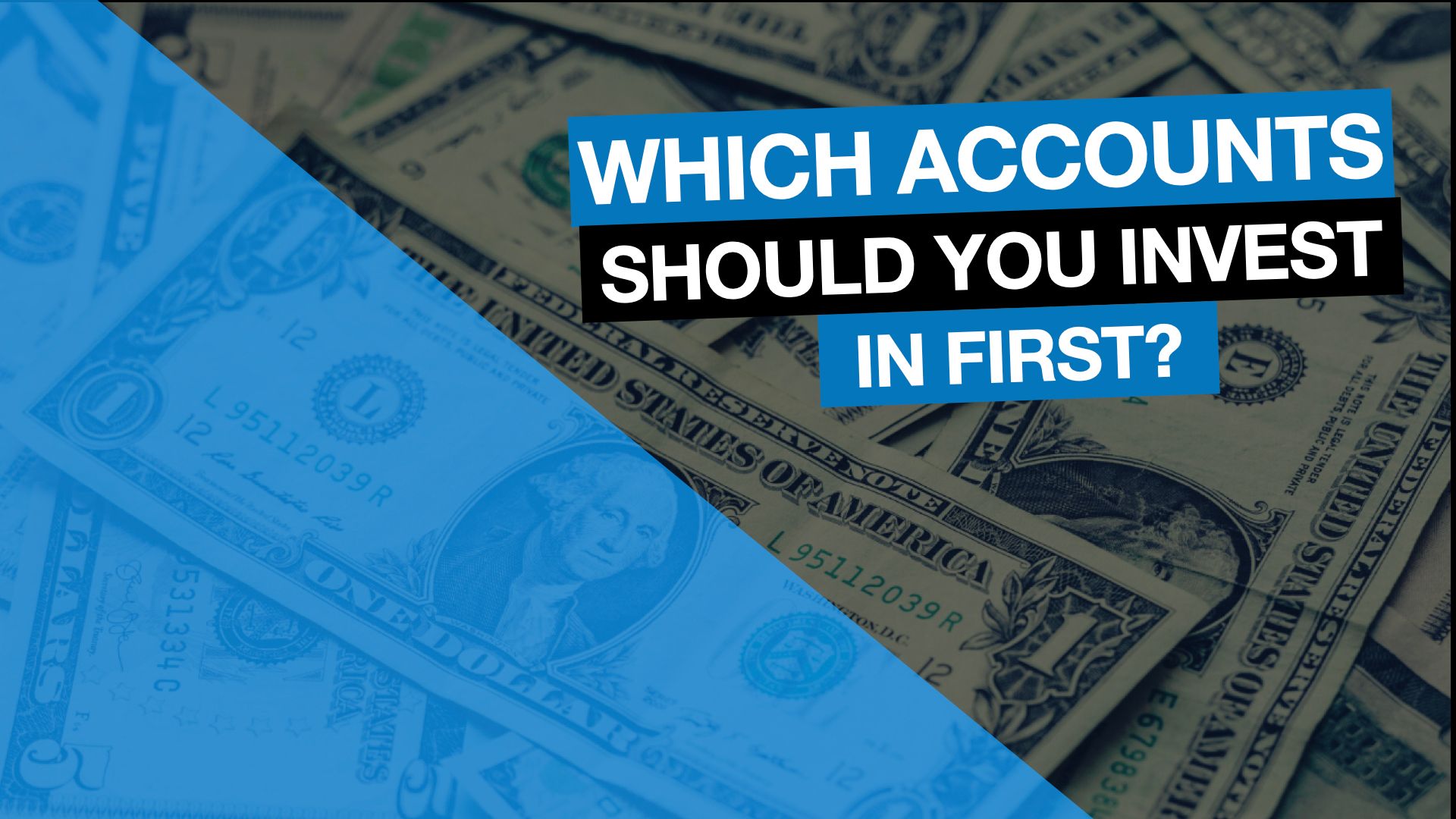Which Accounts Should You Invest In First?

There are many different investment accounts available to you and it can be confusing knowing which order you should invest money in. This article will discuss the 6 steps of investing and how you should optimize your investment accounts.
1. Contribute to Your 401(k) to Get Employer Match
The first thing you should do is contribute enough money into your 401(k) in order to receive the company match. A 401(k) match means that for every dollar you contribute to your 401(k), your company will match your contribution up to a certain amount.
So, for example, if you make $50K and your employer matches 100% of your contribution up to 4% of your salary, you'll contribute $2,000 and your company will match with $2,000. This is free money and there is no better deal than that.
2. Pay Off Your Credit Card and any Other High Interest Debt
The second thing to do is to start paying off any high interest debt, such as credit card debt. The average credit card APR ranges between 15 and 25% which is pretty significant. Historically, the average stock market return is 8%.
Therefore, paying off your credit card debt will give you a pretty amazing instant return. (Check out my post about the 5 steps to paying off credit card debt if you need more help.)
Student loan and mortgage debt is fine because it usually has lower interest rates, so continue paying the monthly payments on that but don't worry about trying to pay those off quickly.
3. Contribute as Much as you Can to a Roth IRA.
Now once you have paid off your high interest debt, you can start investing more money. I recommend putting your money into a Roth IRA and $6,000 is the contribution limit as of 2021.
A Roth IRA is not employer sponsored, so you have to contribute money on your own. The reason why I prefer to put money into a Roth IRA instead of a 401(k) is that there are typically much better investment options to choose from.
With a Roth IRA, you contribute after-tax dollars, and you don't pay any tax when you withdraw it after the age of 59 1/2.
4. Max out 401(k)
Next, if you have any money left over to invest, you should contribute as much as you can to your 401K. The contribution limit in 2021 is $19,500.
5. Fund an HSA
Next, if you have a high-deductible insurance plan, you most likely have access to a health spending account or HSA. An HSA lets you set aside pre-tax money to pay for qualified medical expenses, including deductibles, copayments, and other health-related expenses.
An HSA is great because it is considered a triple tax advantaged account where you contribute tax-free money, take a tax deduction, and your money grows tax-free.
An HSA acts as a checking account but you can also invest it. The maximum contribution limit in 2021 is $3,600.
If you don't have access to an HSA, then move on to the next step.
6. Invest into a Taxable Account
All the previous investment accounts were retirement accounts with tax-benefits. Once you have hit the maximum contribution on all of them, you can open up a standard taxable account, which just means that the money you put in will already be taxed, and then once you pull the money out, it will be taxed again. There is no limit to the amount of money you can contribute into a taxable account. So, put as much as you possibly can.
*Disclaimer: I am not a financial advisor. The ideas presented in my articles and videos are for entertainment purposes and not to be taken as financial advice.
